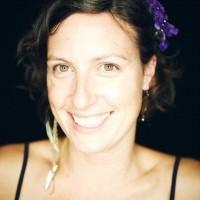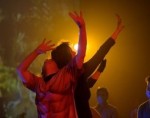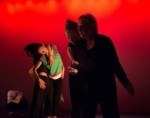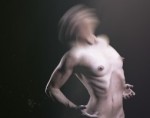Languaging Dance
by Megan Bridge
Some of the most profound experiences we have as human beings occur in a realm that is outside of language. Dance in particular, both in the creative process and in the context of performance, can be a site where we access those experiential realms of not knowing, not explaining, but sensing, thinking physically. Yet we live in a world that requires artists to create language around their work. This language differs in different contexts: the words a choreographer chooses to articulate her values vary greatly depending on whether she is seeking funding from a grant panel, creating marketing copy to sell tickets, or trying to explain to a stranger on the bus what kind of dance she does. Constantly reinventing the language we use to describe our work can start to feel a little schizophrenic, even disingenuous. And when the “truth” of a work is outside the linguistic realm, any attempt to articulate that truth in language is going to miss the mark. Still, you have to start somewhere.These were some of the topics that were covered in a ninety-minute panel discussion at Gibney Studios in New York this week as part of Movement Research Spring Festival’s Studies Project: Placing Performance. I participated as a panelist along with moderator Sarah Maxfield, AUNTS, and Spring Festival co-curators Layla Childs, Jaamil Kosoko, and Samita Sinha. The overarching theme of this year’s Spring Festival at Movement Research is “LEGIBLE/ILLEGIBLE.” Our panel discussed ways in which languaging dance can create frameworks and entry points, can demystify and create access to work that might otherwise be difficult or even alienating for the uninitiated. On the other hand, when trying to articulate the ineffable, sometimes words can unintentionally do a disservice, over-analysis standing in the way of shared experience or visceral understanding.
Some of the artists in attendance spoke up about their frustrations with the general state of dance criticism. In New York, especially, a Times review is often the most visible and lasting document of a work. But that piece of writing is constrained by word count and is a reflection of one person’s viewing of one performance. Artists who want to take a more curatorial approach to shaping the language around their work are developing other strategies, such as bringing in embedded writers and philosophers to follow a project over the course of its development.
Certainly, my position as current director of thINKingDANCE was a large part of why I was invited to participate on this panel. At thINKingDANCE, we’ve talked at length over the years about how simple, direct, descriptive language is sometimes the best way to communicate about the complex ideas often found in performance work. And about how simple, direct, descriptive language can be reductive, can dumb down. We feel passionately about pushing the forms of dance writing, but we also know that returning regularly to the discipline of writing a traditional review pushes us to learn and grow as writers.
At Placing Performance, the ninety-minute discussion focused much on writing and language, but also meandered through many more topics relevant to dance, performance, and living in a highly mediated society. The curators spoke about their desire to locate the Spring Festival in multiple sites, hoping to access different communities. This sparked a brief digression into the concept of “community” and what assumptions go into defining one’s own. We also talked about technology and the practice of snapping quick pictures and videos at performance events. For the people consuming these mini-documents, their collection and wide-spread sharing often stands in for the event itself. And for the documenter, viewing the performance through the interface of a screen can compromise their ability to fully experience the event in the moment that it’s actually happening.
The Movement Research Studies Project is “A series of artist-instigated panel discussions, roundtables, performances and/or other formats that engage issues of aesthetics, philosophy and social politics relevant to the dance and performance community.” Here, a space was created for artists, writers, and curators to come together and discuss aspects of the field that impact their work on a daily basis. And now, as I sit to write my experience, I wonder: Have I, through this writing, transmitted anything that resembles my actual experience at this event? It’s a start.
By Megan Bridge
May 15, 2015










